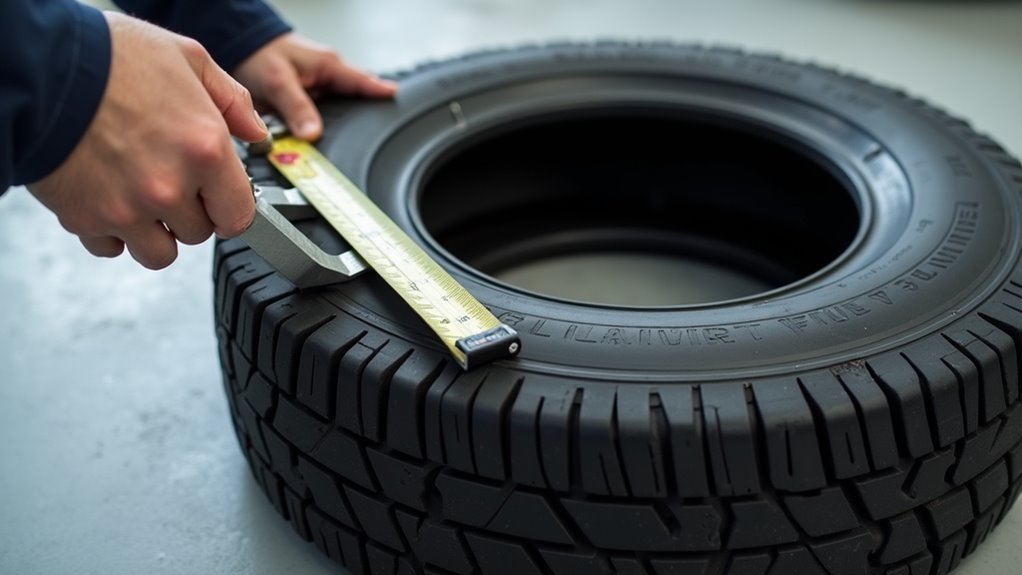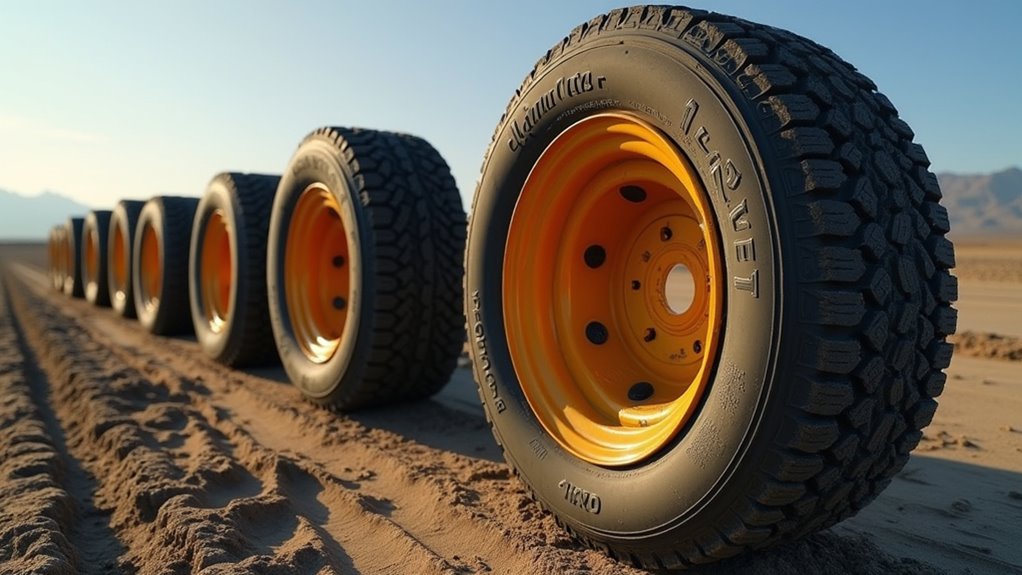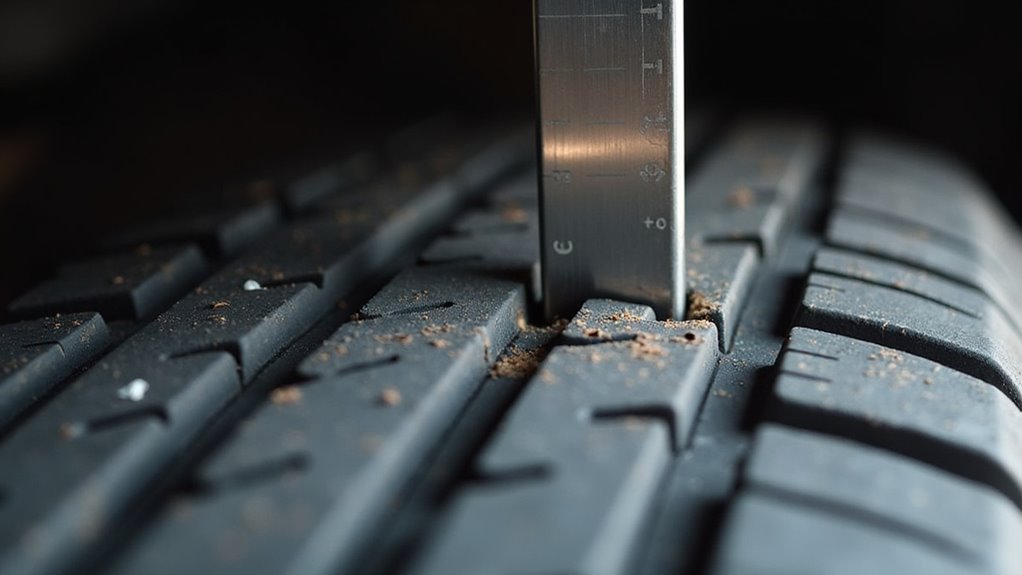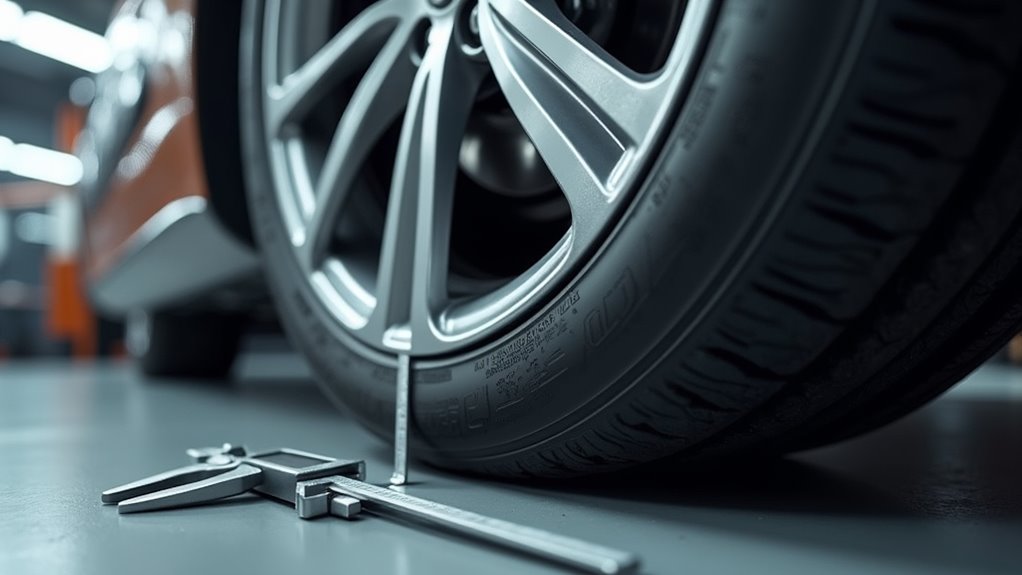How Are Tires Measured
This post contains affiliate links. As an Amazon Associate, we earn from qualifying purchases.
Tires are measured using specific tools and dimensions to ensure safety and performance. Key measurements include width, aspect ratio, and wheel diameter, often found on the sidewall as, for example, 205/55R16, along with tools like tape measures, tread depth gauges, and pressure gauges. More detailed explanations and additional insights on methods like calculating circumference or using the penny test for tread depth will follow later in the article.
Essential Facts in 30 Seconds
- Tires are measured by width, aspect ratio, and wheel diameter, often in millimeters and inches.
- Tire circumference is determined using the roll-out method or by multiplying diameter by 3.14.
- Tread depth is checked with a gauge or penny test to ensure safety and grip.
- Overall width includes sidewalls, while tread width impacts grip and road contact.
- Sidewall markings indicate sizing, load capacity, and vehicle compatibility.
Essential Tools for Tire Measurement
Precision matters a lot in tire measurement. You need the right tools to get correct results. Let’s explore key tools for checking tires. Tape measures, tread depth gauges, and tire pressure gauges help a lot. Use them with proper steps to know your tire’s condition.
Grab a tape measure first. Lay it flat across the tire tread. This checks the diameter easily. Next, take a tread depth gauge. It shows wear in tire grooves. Safety depends on this step. Then, use a tire pressure gauge. It tells if inflation is right. Correct pressure stops uneven wear.
These tools keep tires safe and strong. Additionally, a wheel diameter gauge can be used to ensure accurate rim measurements. Check out the main ones below:
- Tape Measure: Measures diameter and tread width.
- Tread Depth Gauge: Checks wear on tires.
- Tire Pressure Gauge: Verifies proper inflation.
Using a caliper can also help measure tire width accurately for precise fitting and performance.
Stick to these tools for best results. They make tire care simple and fast.
Key Dimensions of a Tire

Tires matter a lot for your vehicle’s safety and performance. Let’s break down the key dimensions. These details help you pick the right tires easily. Trust me, it’s simple to understand!
First, know the tire width. It’s the distance between sidewalls, shown in millimeters. For example, 215 in “P215/65 R15” means 215 millimeters. This number affects how tires fit on wheels. Wider tires can also improve traction during cornering for better handling.
Next, check the aspect ratio. It’s a percentage, like 65 in that example. This shows sidewall height. A higher number means a softer ride. Knowing how to calculate section height from the aspect ratio and width can be useful, as it’s simply Aspect Ratio × Width.
Then, look at wheel diameter. It’s in inches, like 15. This must match your rim size. The right fit keeps everything working well.
Also, understand overall width and tread width. Overall width counts sidewall extras. Tread width is narrower and impacts grip on roads.
Master these basics. You’ll choose perfect tires every time!
Measuring Tire Circumference

Let’s, let’s talk about measuring tire circumference the easy way! This matters a lot for tracking speed and distance on your bike or car. I’ve got simple steps to help you do it right. Trust me, it’s not hard at all!
Try the roll-out method first. Mark a spot on your tire, like the valve. Roll it one full turn on flat ground. Then measure the distance it traveled. Easy, right? But watch out—tire pressure can change results by 1 to 3 percent. Soft ground also messes with the number. Knowing how to calculate tire diameter can help ensure more accurate circumference measurements. Remember that factors like rider weight and tire wear can also affect circumference accuracy.
Check this handy table for quick tips:
| Method | Key Tip |
|---|---|
| Roll-out Method | Mark valve, roll on pavement. |
| Formula Trick | Multiply diameter by 3.14. |
| Load-Adjusted Way | Add rider weight before rolling. |
| Sensor/App Help | Enter tire size for auto result. |
Take multiple measurements to get it spot on. Use a pressure gauge for better accuracy. Stick to standard rules for the best data. That’s it—you’ve got this!
Assessing Tread Depth

Tires are vital for your safety on the road. Tread depth matters a lot. It helps with grip, control, and stopping power. Poor tread can cause slips on wet roads. This raises accident risks. Data shows worn tires increase crash chances by 30%.
Check tread depth to keep safe. Try these easy steps now. First, grab a tread depth gauge. It gives exact numbers for accuracy. Next, do the penny test. Place a penny in the groove. See Lincoln’s head? If hidden, tread is okay. Then, look at tread wear bars. Exposed bars mean replace tires fast. Last, check tires every month. Do this before long drives too.
Stay alert about tire care. Bad tread hurts fuel use. It costs you more money. Protect yourself and others. Keep tires in good shape always. Remember, proper tread depth is especially critical in winter driving conditions for enhanced safety and performance.
Standardization in Tire Sizing

Tire sizing standards matter a lot for safety and fit on vehicles. They keep things consistent across different cars and places. Look at the tire sidewall. You see numbers and letters there. These show important details like load capacity. This helps pick the correct tire for your car.
Grasp these rules to choose wisely. Tires vary for different vehicles. P-metric suits passenger cars. LT-metric works for light trucks. See the table below. It lists tire types and their uses clearly.
| Tire Type | Designation Example | Primary Use |
|---|---|---|
| P-Metric | P225/70R16 | Passenger Vehicles |
| Euro-Metric | 225/70R16 | European Passenger Cars |
| LT-Metric | LT235/85R16 | Light Trucks |
| Flotation | 31×10.50R15 | Off-Road Vehicles |
| Numeric | 6.50-16 | Classic Vehicles |
Know these differences. Make smart choices for your rides. Stay safe on every trip. Understanding tire size numbers is crucial for ensuring the right fit and performance.
Frequently Asked Questions
How Do Tire Sizes Affect Vehicle Performance?
Tire sizes play a huge role in how your vehicle performs. Bigger tires give better traction. They help you grip the road tightly. This makes turning corners much sharper. But, they can hurt your fuel economy. Smaller tires might save gas instead. They often feel lighter on the road. Still, they may not handle turns as well. Data shows larger tires add up to 5% more grip. So, pick wisely for your driving needs!
Why Do Tire Measurements Vary by Brand?
Tire measurements often differ across brands, and that’s no surprise! Each company uses unique designs to stand out. They mix different materials for better grip or durability. Some tweak sizes slightly for a smoother ride. Think of it—every brand crafts its own magic! Data shows variations can reach up to 5% in tread depth. That’s a big deal on the road! Stick with one brand for consistency. You’ll notice the difference in handling. Trust me, it matters a lot!
Can Tire Measurements Change Over Time?
Tire measurements do change over time. Wear and tear make tires smaller. Checking them often keeps readings accurate. Don’t skip these checks ever. Track any shifts with a simple log. Studies show tires lose 1-2 mm yearly. Stay on top of this. Small changes affect safety a lot. Keep your ride smooth and secure.
How Does Load Impact Tire Dimensions?
Load acts like a heavy weight pushing on your tires. It changes their shape if not handled right. Tire load ratings show how much weight they can carry. Proper tire pressure keeps them strong under this force. Think of it—too much load flattens them fast! Data says overloading cuts tire life by 20%. Adjust pressure often to save their form. Stay safe by checking load limits always.
What Role Does Tire Age Play in Sizing?
Tire age matters a lot for safety and performance. It doesn’t change tire size at all. Old tires can crack and lose grip fast. Think about this—safety first! Data shows tires over six years old risk blowouts. Replace them even if they look okay. Age affects handling more than sizing does. Stay safe on the road always.
Conclusion
Tires are important for safety and smooth driving. Did you know? About 11,000 crashes happen yearly in the U.S. due to bad tire size or wear. This data comes from the National Highway Traffic Safety Administration. Always measure tires with care. Use the right tools for accuracy. Check dimensions, circumference, and tread depth properly. This keeps your car safe on the road. Stay protected by doing it right. Your well-being depends on good tires!
